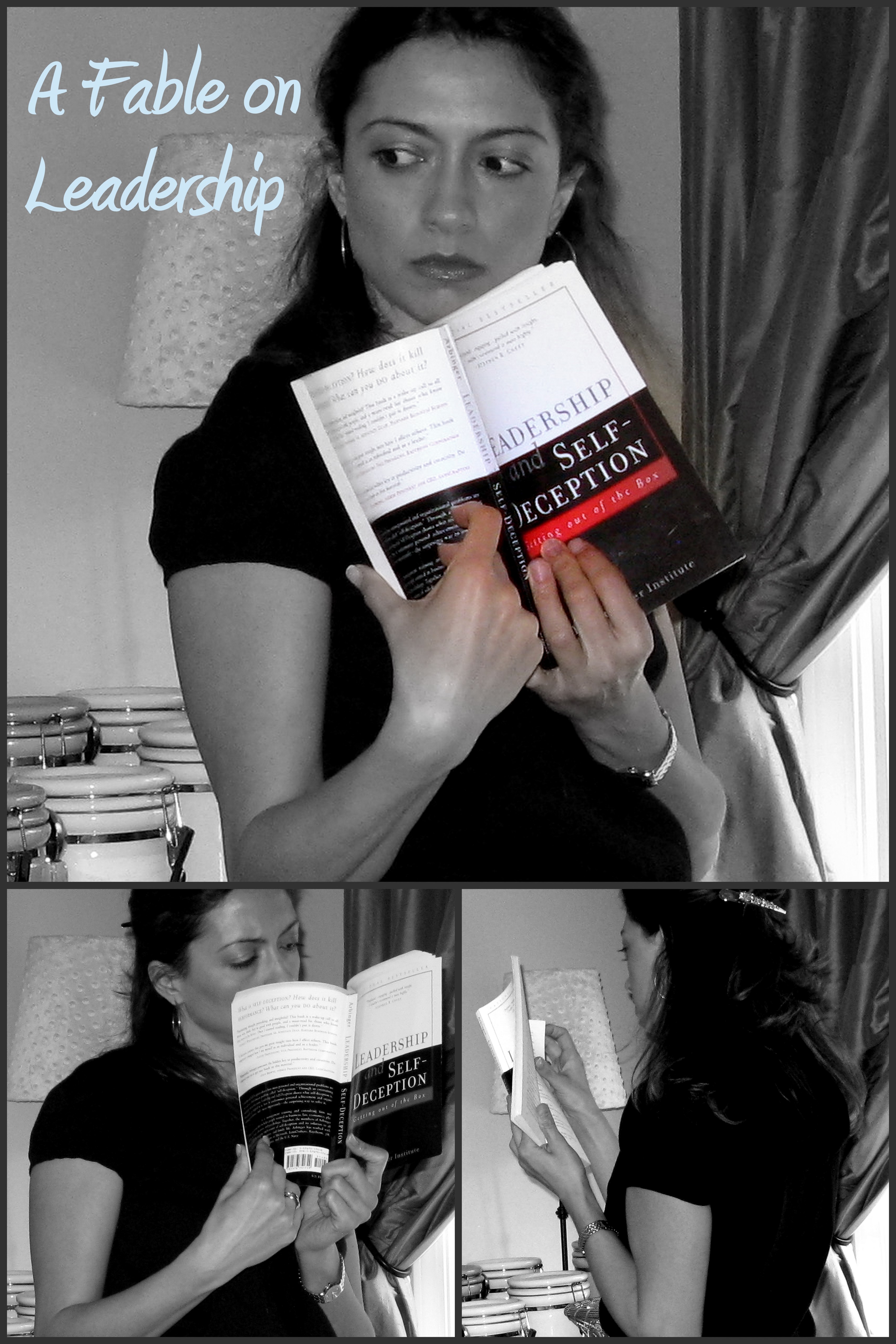Recommended Dr. Stephen Covey, one of my all-time favorite authors and speakers, this book is refreshing in its organizational leadership ideas and problem-solving approach. Over a dozen business and leadership books later, I am able to confidently say this book presents ideas rarely seen in its genre.
The premise of this book focuses on one’s own limited view of people, relationships, and organizational dynamics and clearly shows them as obstacles to one’s optimal performance and productivity. The Arbinger Institute reveals the new thoughts and debunks false notions around leadership. The best leadership and business books weave the concepts into a story rather than disseminate them in dry abstract paragraphs. Try as it may, abstraction always comes short of making us engage and anticipate the the way a good story does – and few other styles make the concepts more lasting in our memory bank. It is within the context of a good story that true learning happens.
 In “Leadership and Self-deception“, our story is written in first-person, accounting the tales of a successful executive who has newly joined Zagrum Company and asked to meet with the executive committee. Kate Stenarude, Zagrum’s President, and Bud, the coach, carry the story forward in the course of several unusual sessions with our main character. The story flows effortlessly and quickly as Bud questions the protagonist in choices he has made in his life, personal and business, and the motives and intent with which he has made them.
In “Leadership and Self-deception“, our story is written in first-person, accounting the tales of a successful executive who has newly joined Zagrum Company and asked to meet with the executive committee. Kate Stenarude, Zagrum’s President, and Bud, the coach, carry the story forward in the course of several unusual sessions with our main character. The story flows effortlessly and quickly as Bud questions the protagonist in choices he has made in his life, personal and business, and the motives and intent with which he has made them.
We are slowly making our way to the core of the book as he introduces us the concept of the Box – Being in the Box and Getting out of the Box. In this context, the Box represents the mental borders we draw around ourselves, to protect ourselves, to set us apart from rest of the world and justify our own actions. Bud explains in these sessions that we see others more or less as people only when we are out of the box – and we see them in a systematically distorted way, as mere objects in his words, when we are in the box. “We can be hard and invite productivity and commitment, or we can be hard and invite resistance and ill will. The choice is whether we do it while in the box or out of the box.” It alludes to something deeper than behavior that determines our influence on others.
In acting contrary to one’s own sense of what is appropriate, we learn, one betrays his own sense of how he should be toward another person. That is self-betrayal. The choice is whether to honor the sense or to betray it. According to Bud, “When I betray myself, I see the world in a way that justifies my self-betrayal and my view of reality becomes distorted, then I enter the box.“ Put another way, when I betray myself, I:
- Inflate others’ faults
- Inflate own virtue
- Inflate the value of things that justify my self-betrayal
- Blame others
Life is hard but it becomes self-justified when we are in the box. In the box, the book goes on to say how we inflate others’ faults, and the value of our judgment to justify the betrayal, and finally, our own virtue. Then we blame everyone else for the problems. By being in the box, we provoke others to be in the box and we invite mutual mistreatment and obtain mutual justification – it’s a cycle. We collude in giving each other reason to stay in the box.
“In the moment that we cease to resist others, we are out of the box – Liberated from self-justifying thoughts. People we are resisting are right in front of our eyes. We stop betraying ourselves towards them…“.
Of course, none of this implies that we are always at fault. Accountability falls where it belongs, and those who are accountable will own up to it, and exude responsibility and deliver what is necessary – so long as we treat them as people, not as mere objects.
Reading is the best pastime for an active mind! If you like to see the other book reviews, check the index of In Print.
The latter part of the book, which guides us into Getting out of the Box and exercising leadership in the liberated box-free world, we share in our hero’s confusion in how the usual remedies fail here. This is where new leadership concepts are born and revealed. Getting out of the Box is only possible when we know well the problem with being in the box.
If you read only one business book, this would be among my top recommendations. If you can read only a few pages, read page 165-166. “Living the material” section is clean, short, void of all business jargon, and beautifully written to boot. My favorite quote in all of this book has got to be this one:
Don’t worry whether others are helping you. Do worry whether you are helping others.
 I am Farnoosh, the founder of Prolific Living. So glad you are here. My mission is to empower you to unblock your creative genius to live your dream life.
I am Farnoosh, the founder of Prolific Living. So glad you are here. My mission is to empower you to unblock your creative genius to live your dream life.